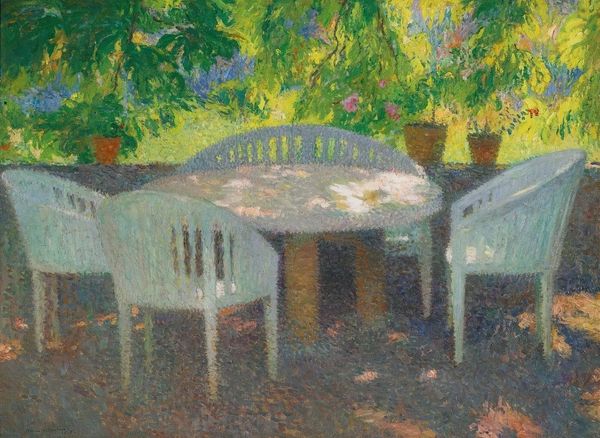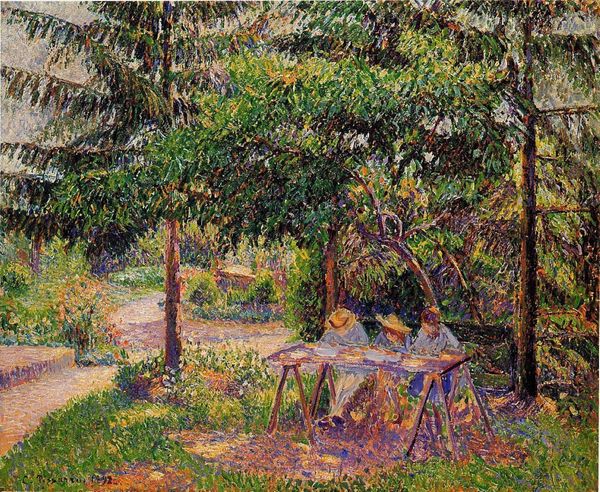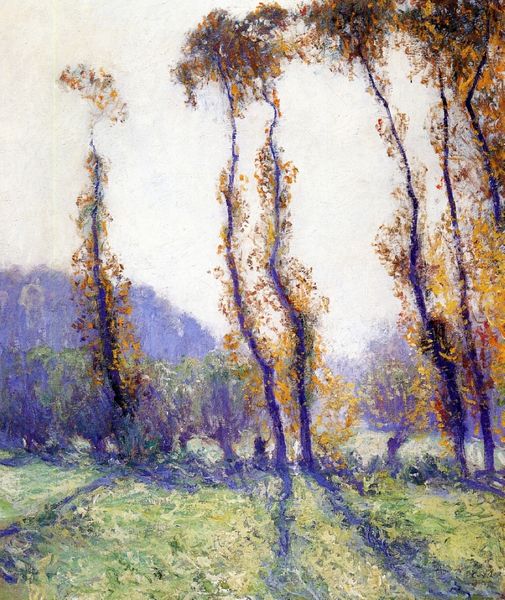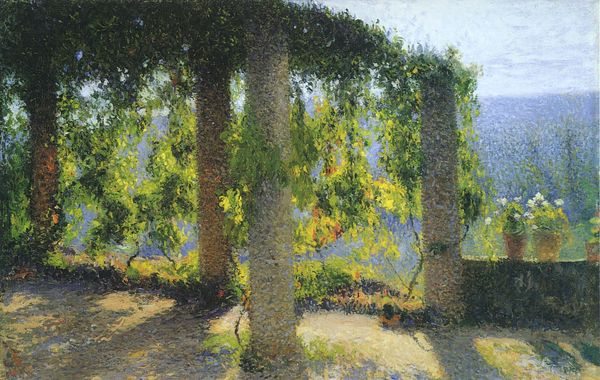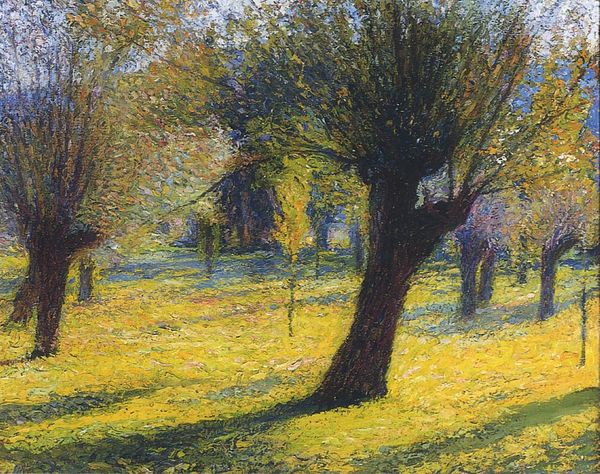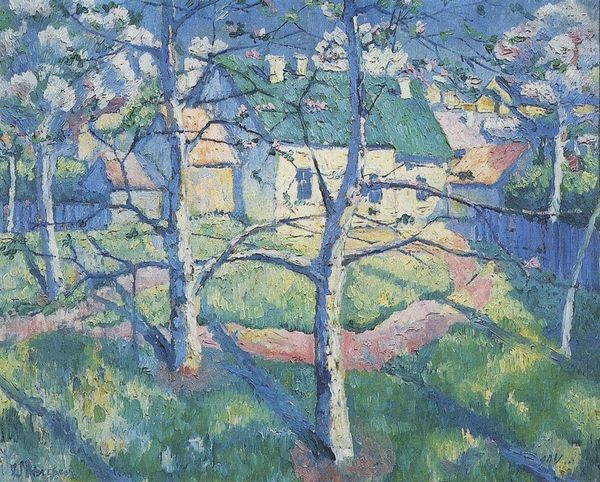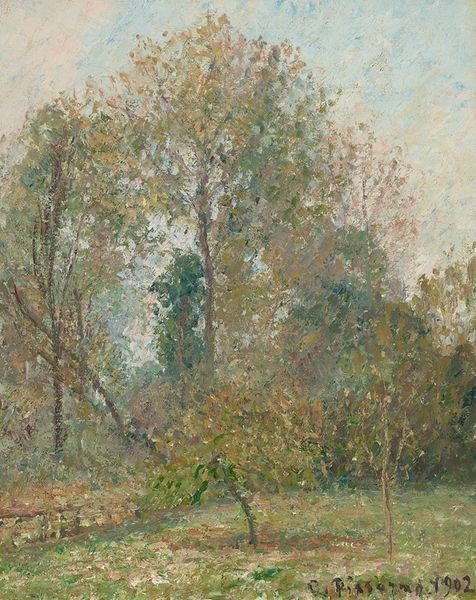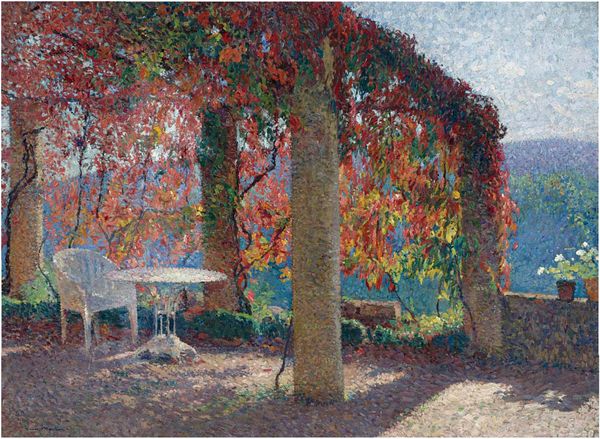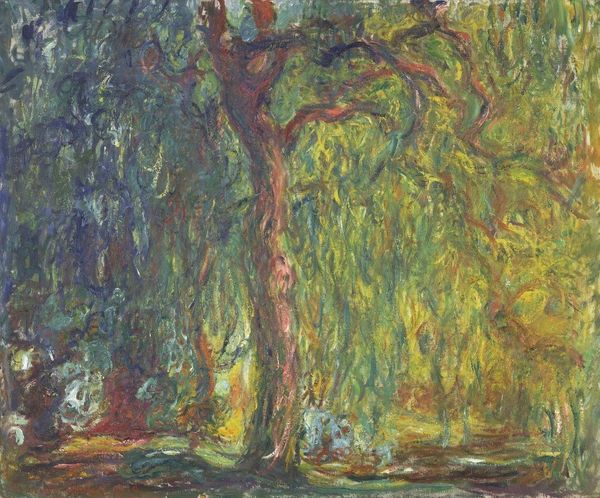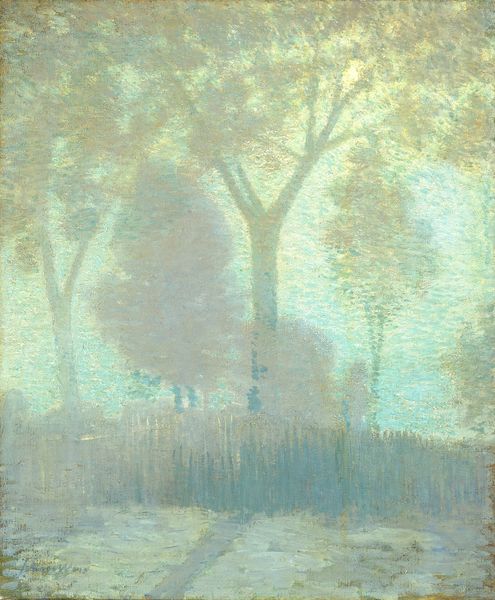
Copyright: Public domain
Curator: Here we have Ivan Grohar’s “Štemarski Garden,” a captivating landscape created around 1907 using oil paints and applying the impasto technique. It exudes an aura that immediately recalls impressionist masterpieces. Editor: Oh, this gives me the sensation of being in a fever dream in the best possible way. It's an otherworldly snapshot, all fuzzy and shimmering like the scene's edges are melting into each other. What's going on here? Curator: It seems to capture a quintessential motif from turn-of-the-century painting. Impressionism—born from fleeting glimpses—saw in the landscape a way to translate shifting emotional and perceptual states. The artist makes use of plein-air painting to capture natural light and immediacy. In some ways, the symbolism of a garden is like civilization claiming territory, nature becoming the foundation and substance for new ways of life. Editor: You said it! The artist goes far beyond simply documenting the outdoor scene, infusing it with, what's the word, like, an atmosphere! See the chairs scattered haphazardly as though left by ghostly occupants? The tables arranged expectantly beneath a canopy of blurred foliage—each object radiates more feeling than form. It's dreamy yet melancholic! Curator: This impasto application—thick layers of paint laid on the canvas—captures that fleeting sensory response. What seems accidental hides sophisticated meaning, offering the garden as both an aesthetic and emotional subject. The scattered elements convey that human intervention might have an ultimate harmony with the garden that goes unnoticed. Editor: Indeed! With Grohar, this work goes far beyond aesthetic impressions; he uses these chairs and tables, bathed in evocative color schemes, as vehicles into an introspective voyage. As viewers, it's almost as if we’ve crashed into some unknown happening right out of a fable—uncovering beauty where most wouldn't ever suspect! Curator: We agree that this invites viewers to ponder what lingers below perceived impressions. By exploring familiar elements such as chairs and tables, and making them symbolic in organic patterns, Grohar speaks not only about the environment but of humanity's imprint, fleeting impressions on ever-changing canvases! Editor: That pretty much nails it for me. “Štemarski Garden” turns the natural world into an infinite mirror; there's absolutely no looking at trees and light in precisely the same fashion following what our Slovenian contemporary manages in such an evocative piece!
Comments
No comments
Be the first to comment and join the conversation on the ultimate creative platform.
